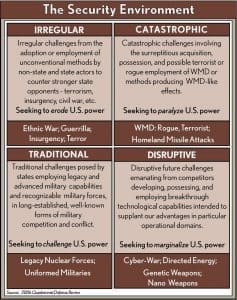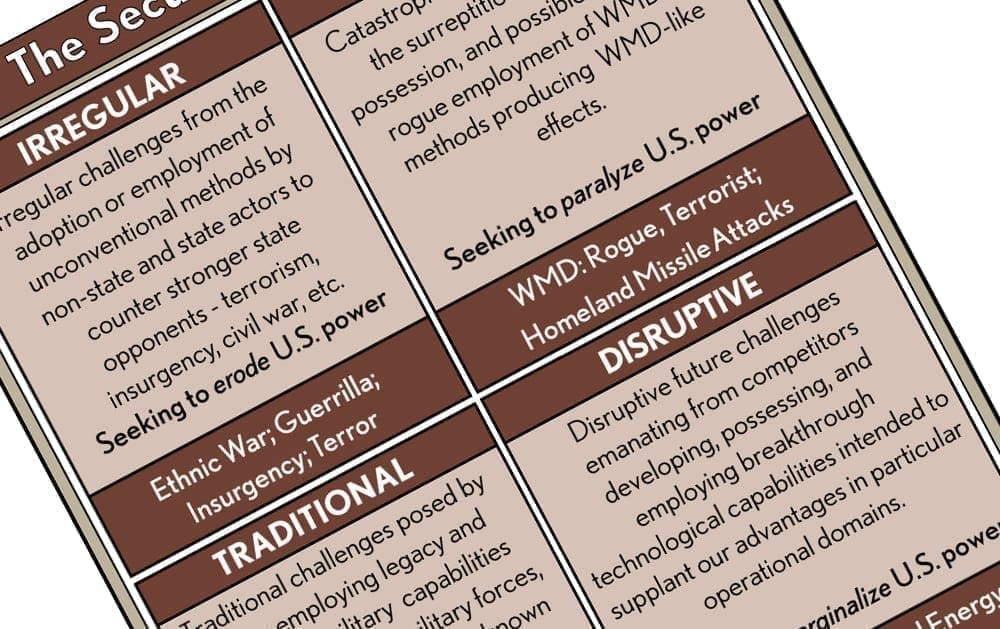What can be disrupted? How real is this threat / promise? It's not a deflection tactic - it's more about opening your eyes to the possibilities, and getting focus on the priorities.
It’s a topical term (disrupt everything) thanks to Clayton Christensen’s excellent work – and the thousands of pundits seizing on the marquee examples (newspapers dying! music unleashed! pointless gas stations!) to keep it top-of-mind.
But for most of us, the meaningful conversation (where meaningful means what are you gonna do to me?((Terrific “Chicago” story behind this comment … ask me about it over a beer and I’ll tell you …))) is how we can be disrupted – leading to the reactionary, defensive search for those technology silver bullets to Save The Company (or, allow us to Disrupt The Other Guys!).
There’s lots of chat, press, type, etc. available for your consideration – but after you’ve wallowed in the deluge, take a step back and think. For my business … for my career … for my lifestyle … for my company – what are we really talking about? What can be disrupted? How real is this threat / promise?
It’s not a deflection tactic – it’s more about opening your eyes to the possibilities, and getting focus on the priorities. Because there are a lot of different ways to be disrupted …

- Organization – New people move into place, as the long-time leaders retire or move on. A new way of thinking might bubble down into the rest of the hierarchy (reorganize by product line! by geography! Centralize! De-Centralize!).
- Markets – A significant change in scope, either broader (global!) or smaller (niches!).
- Customers – Fragmentation that expands touchpoints – or consolidation that shifts the balance of power away from the supplier.
- Competitors – New entrants with better / different technology, or a roll-up / consolidation that creates a new power.
- Supply Chain / Distribution Chain – Changes in the raw material supply, due to environment, regulation, or supplier consolidation.
- Regulatory – Significant changes in government requirements that change cost structures, expand lead times – or loosen existing controls and lower barriers to entry.
Depends on how you define it – but all of these classic changes in your environment can be seen as disruptive; the key is how you choose to react …
Alternatively – these are the different ways you can disrupt your competition; the key is how you choose to act …
19 May, 2014






Comments (1)
Great article Jim! It reminded me of a seminar I attended a few months ago on organizational transformation. One of the key aspects I took from this course was that organizational change through positive disruption is often likened to traditional anthropological theories around Darwinism. While we are in a much more advanced society than what Darwin had studied, the same theories around adaptation still apply today.
“It is not the strongest of the species that survives, nor the most intelligent that survives. It is the one that is most adaptable to change.”
Today technology is viewed as a cost pit by most companies; organizational change through technology is often an overwhelming concept for most business owners in a tactical mindset just trying to “keep afloat.” How do we change the mindset to more of a strategic/positive way of thinking- one that incorporates growth, sustainability, and competitive advantage? We quantify it, prove it’s worth and share with the world so that everyone can jump on the bandwagon. The fact is that those who gain the competitive advantage first through disruptive change will always reap the most benefits over the rest of the market.